Imperial System - Definition, Examples, Quiz, FAQ, Trivia
Learn about the Imperial System with easy explanations, examples, and practice activities
What is the Imperial System?
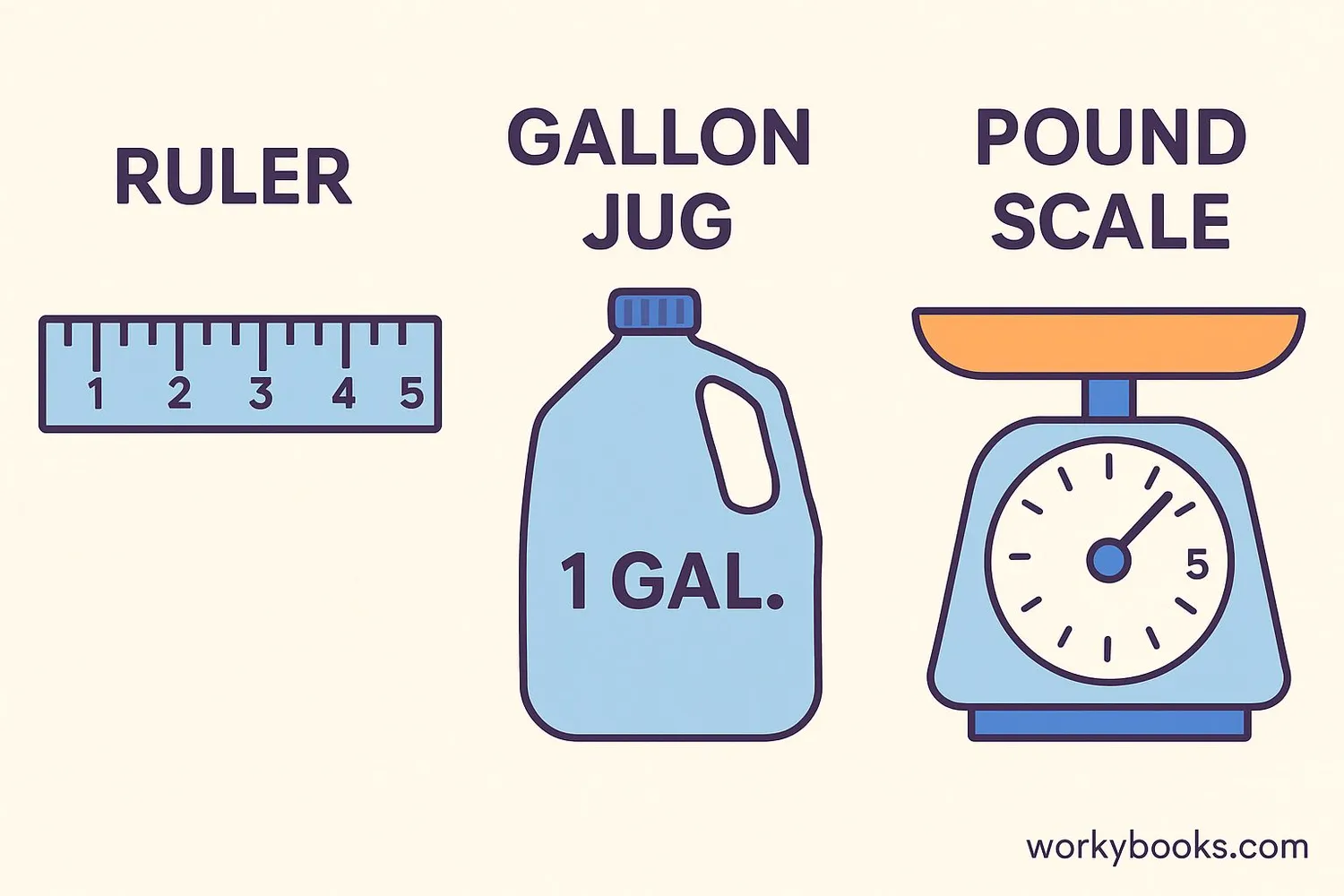
The Imperial System is a system of measurement that uses units like inches, feet, pounds, and gallons. It was originally developed in Britain and was used throughout the British Empire. Today, it's primarily used in the United States, while most other countries use the metric system.
The Imperial System has a long history dating back to ancient Roman measurements. The word "imperial" comes from the Latin word "imperium," which means "command" or "empire." The system was formalized in Britain in 1824 and was called the British Imperial System.
Unlike the metric system which is based on units of 10, the Imperial System uses various conversion factors. For example, there are 12 inches in a foot, 3 feet in a yard, and 1,760 yards in a mile.
Key Concept
The Imperial System is a measurement system using units like inches, feet, pounds, and gallons, primarily used in the United States.
Imperial System vs Metric System
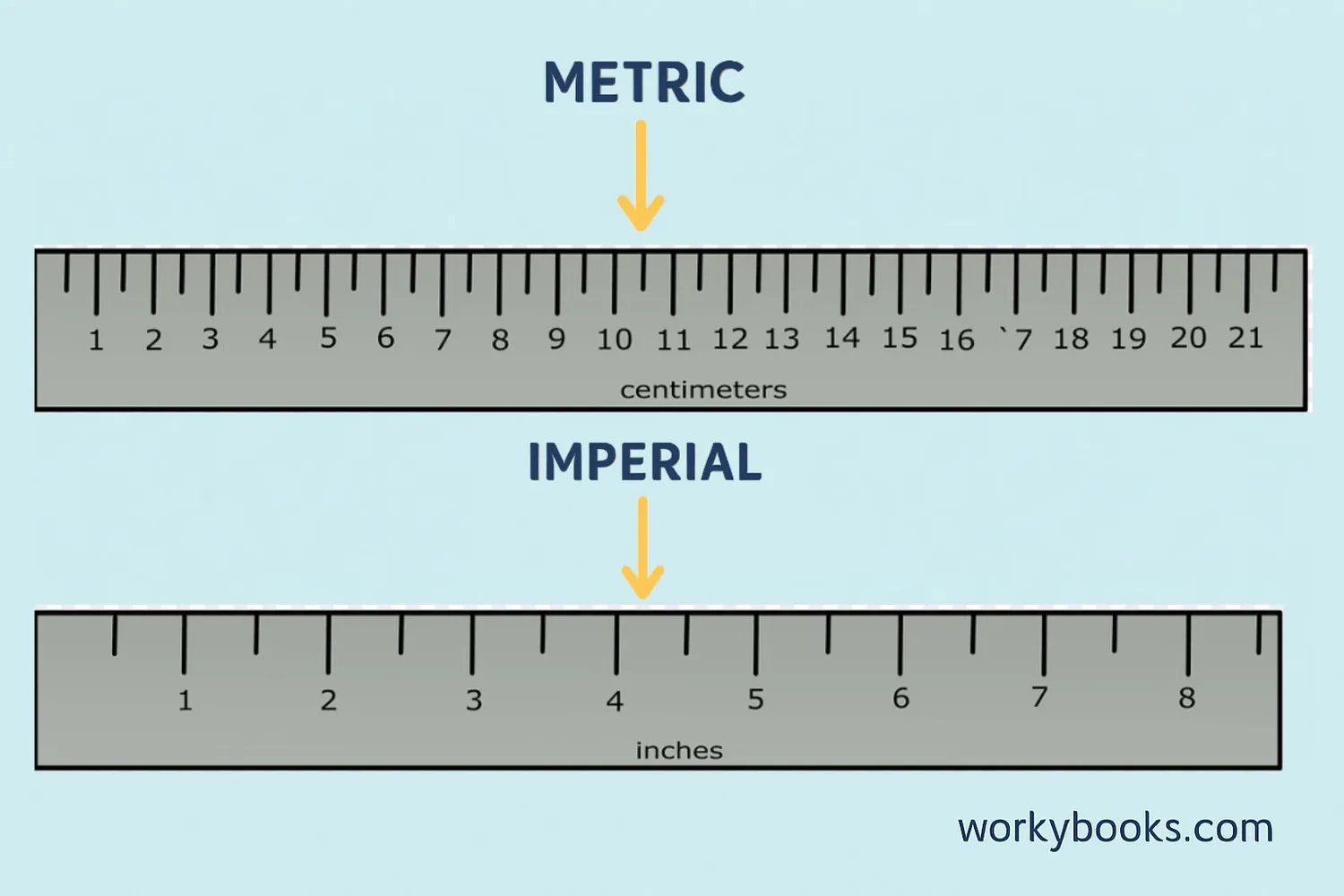
The Imperial System and Metric System are two different ways to measure things. The main difference is that the metric system is based on units of 10, making conversions easier, while the imperial system uses various conversion factors.
Here are some key differences:
| Feature | Imperial System | Metric System |
|---|---|---|
| Base Unit for Length | Inch | Meter |
| Base Unit for Weight | Pound | Gram |
| Base Unit for Volume | Gallon | Liter |
| Conversion Factor | Various (12, 3, 1760, etc.) | 10 (decimals) |
| Countries Using | Primarily United States | Most countries worldwide |
| Ease of Use | More familiar in the US | Easier calculations |
Remember
The metric system is used by scientists worldwide because it's easier to convert between units using decimals.
Imperial System Units
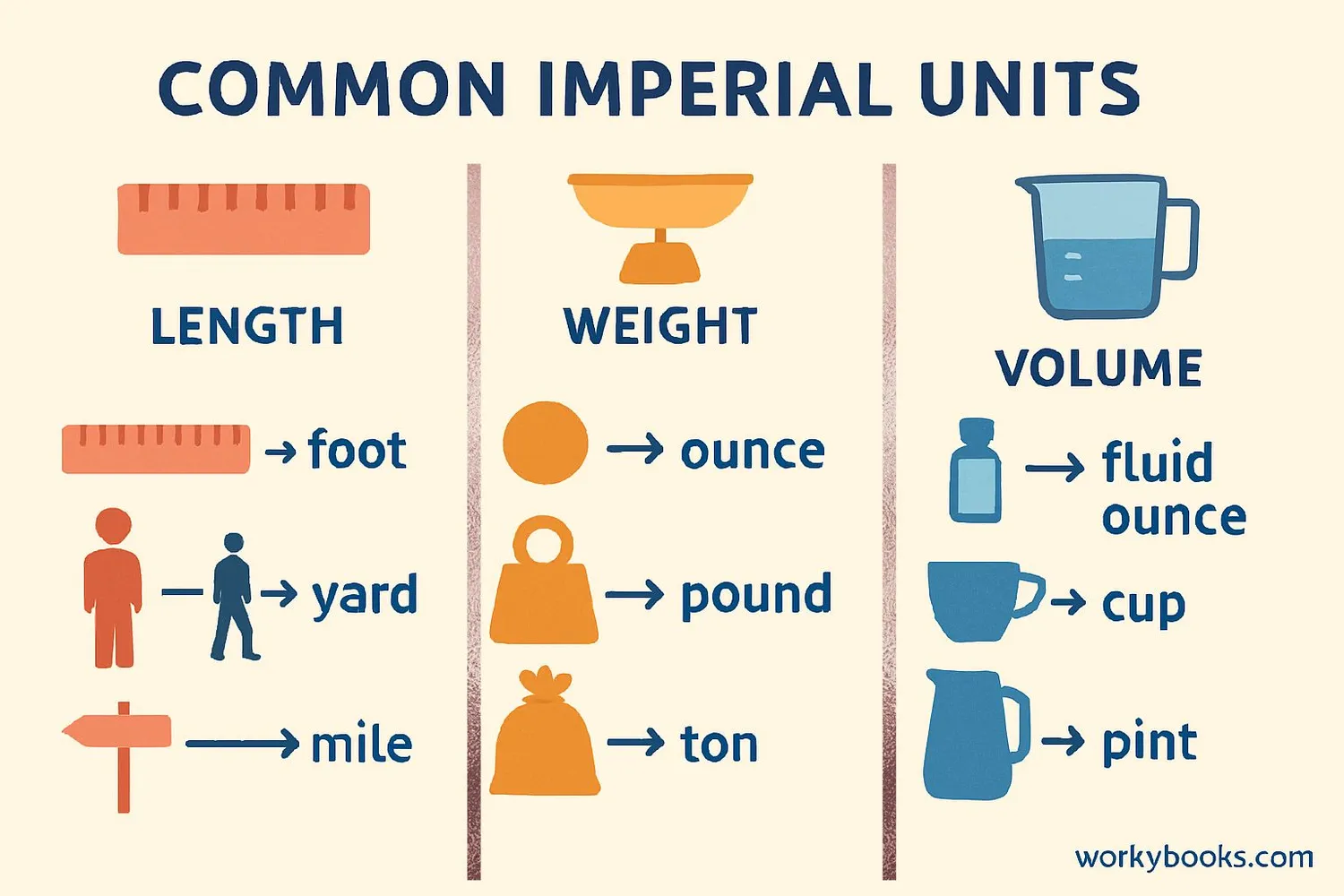
The Imperial System has different units for measuring length, weight, and volume. Here are the most common ones:
Length Measurements
- Inch (in) - The smallest common unit for length
- Foot (ft) - 12 inches = 1 foot
- Yard (yd) - 3 feet = 1 yard
- Mile (mi) - 1,760 yards = 1 mile
Weight Measurements
- Ounce (oz) - The smallest common unit for weight
- Pound (lb) - 16 ounces = 1 pound
- Ton (t) - 2,000 pounds = 1 ton
Volume Measurements
- Fluid Ounce (fl oz) - The smallest common unit for liquid volume
- Cup (c) - 8 fluid ounces = 1 cup
- Pint (pt) - 2 cups = 1 pint
- Quart (qt) - 2 pints = 1 quart
- Gallon (gal) - 4 quarts = 1 gallon
Conversion Tip
Remembering that there are 12 inches in a foot, 3 feet in a yard, and 16 ounces in a pound can help you with imperial conversions.
Why Does the US Use the Imperial System?
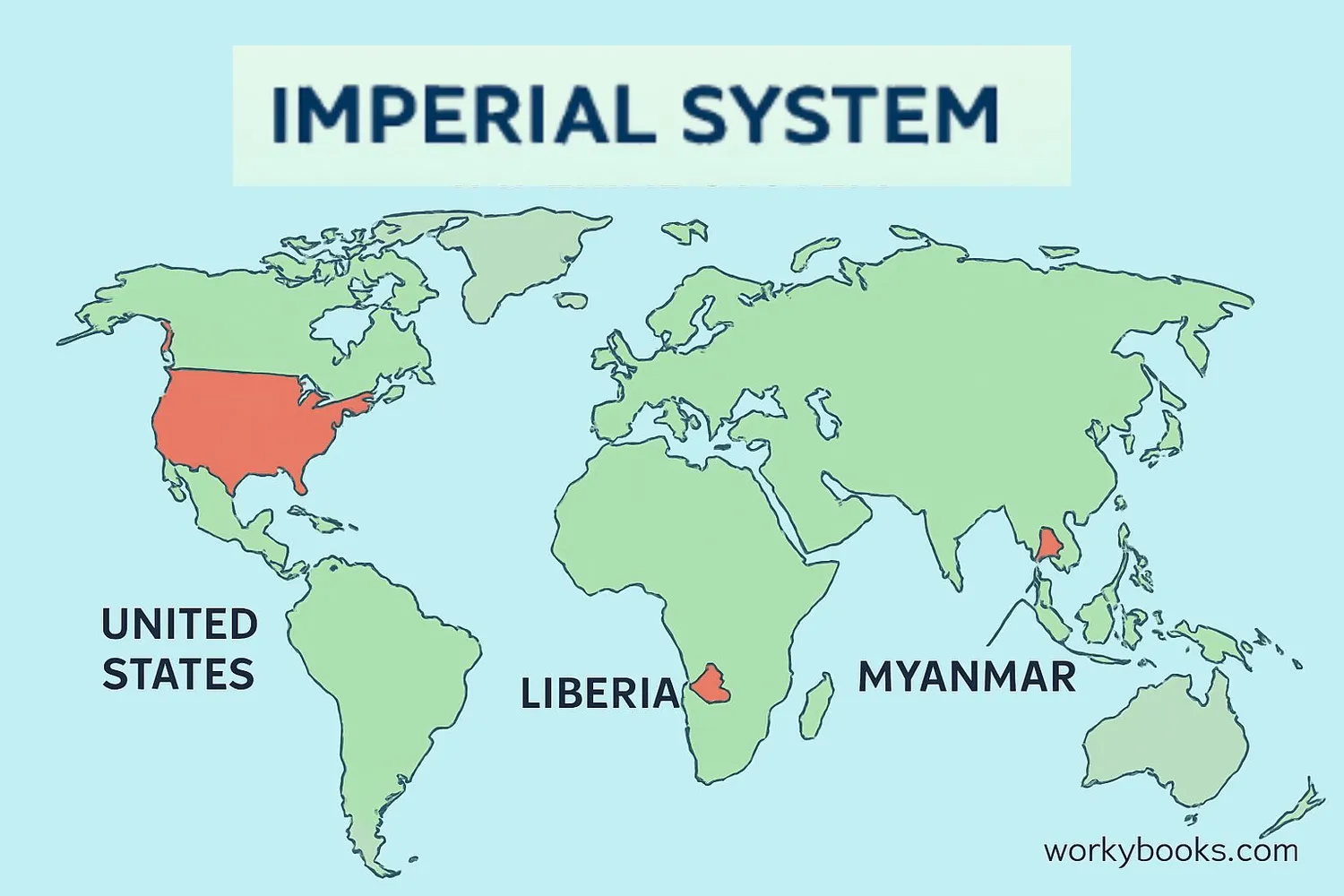
The United States is one of only three countries in the world that still primarily use the Imperial System (the others are Liberia and Myanmar). This might seem unusual, but there are historical reasons for this:
1. Historical Ties to Britain: When the United States gained independence from Britain, it kept the British measurement system that was already in use.
2. Cost of Conversion: Switching an entire country to a new measurement system would be very expensive. All signs, tools, and equipment would need to be changed.
3. Cultural Familiarity: Americans are familiar with the Imperial System, and changing would require everyone to learn a new system.
Even though the US primarily uses the Imperial System, metric units are also used in many areas, especially in science, medicine, and the military. Many products in the US show both imperial and metric measurements.
Did You Know
The US actually passed a law in 1975 to gradually transition to the metric system, but the change was voluntary and never fully implemented.
Imperial to Metric Conversion
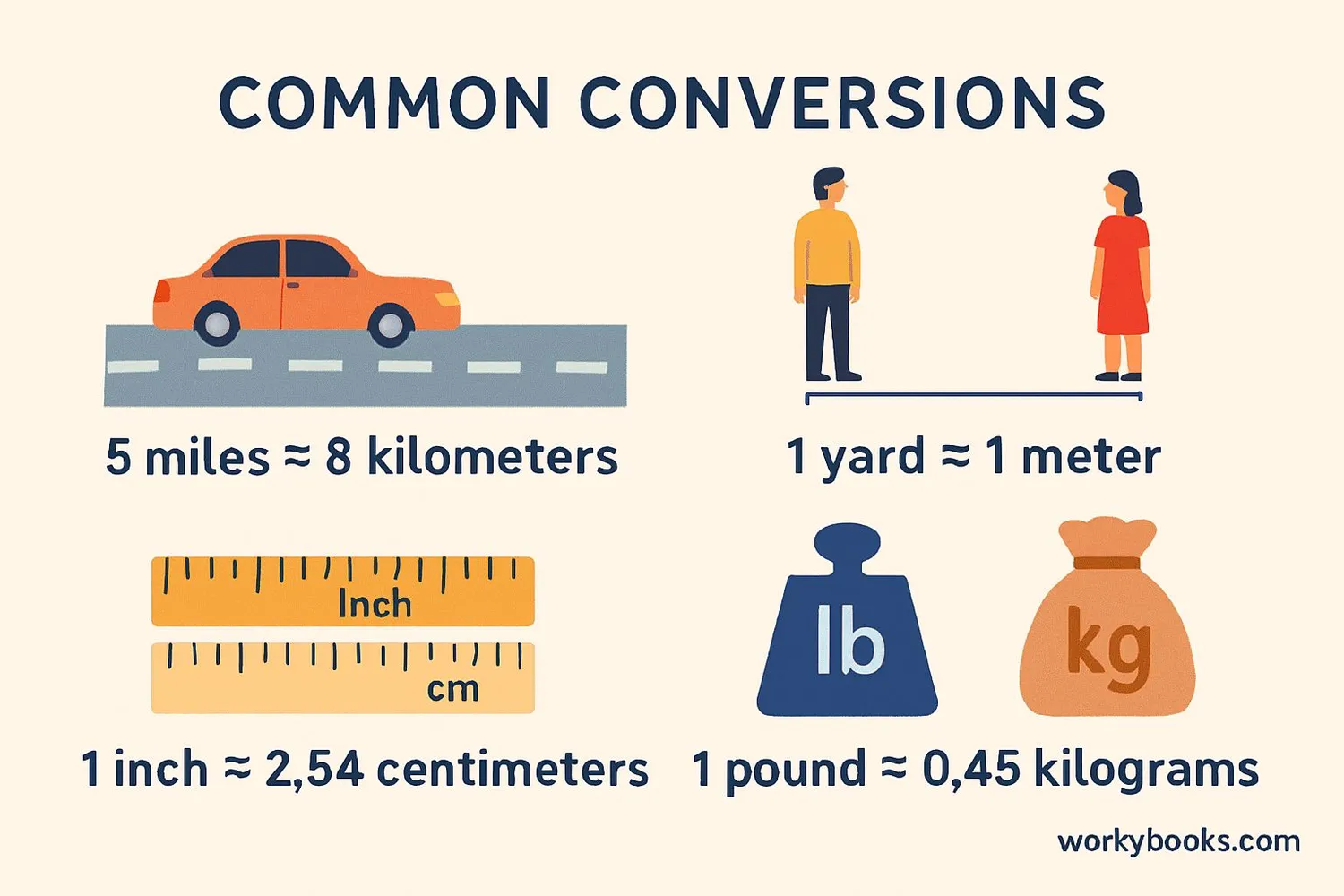
Converting between imperial and metric units is an important skill. Here are some common conversion factors:
Length Conversions
Weight Conversions
Volume Conversions
Let's practice with some examples:
Example 1: Convert 12 inches to centimeters
Solution: 12 × 2.54 = 30.48 centimeters
Example 2: Convert 5 miles to kilometers
Solution: 5 × 1.609 = 8.045 kilometers
Example 3: Convert 2 pounds to grams
Solution: 2 × 0.4536 = 0.9072 kilograms, or 907.2 grams
Practice converting measurements you encounter in daily life to become more familiar with both systems!
Conversion Tip
To convert from metric to imperial, divide by the conversion factor instead of multiplying.
Imperial System Practice Quiz
Test your knowledge with this 5-question quiz. Choose the correct answer for each question.
Frequently Asked Questions
Here are answers to common questions about the Imperial System:
Measurement Trivia
Discover interesting facts about measurement systems:
Origin of the Foot
The measurement "foot" originally came from the actual length of a human foot. In ancient times, people used body parts for measurements, which is why the foot is about the length of an average adult male's foot.
Global Standard
Over 95% of the world's population uses the metric system in daily life. Only three countries (United States, Liberia, and Myanmar) have not officially adopted the metric system as their primary system.
Space Measurement
NASA uses metric measurements for all its space missions. The Mars Climate Orbiter was lost in 1999 because one engineering team used metric units while another used imperial units for calculations.
Largest Imperial Unit
The largest unit in the Imperial System is the league, which is equal to 3 miles. This unit was traditionally used to measure distance at sea but is rarely used today.





